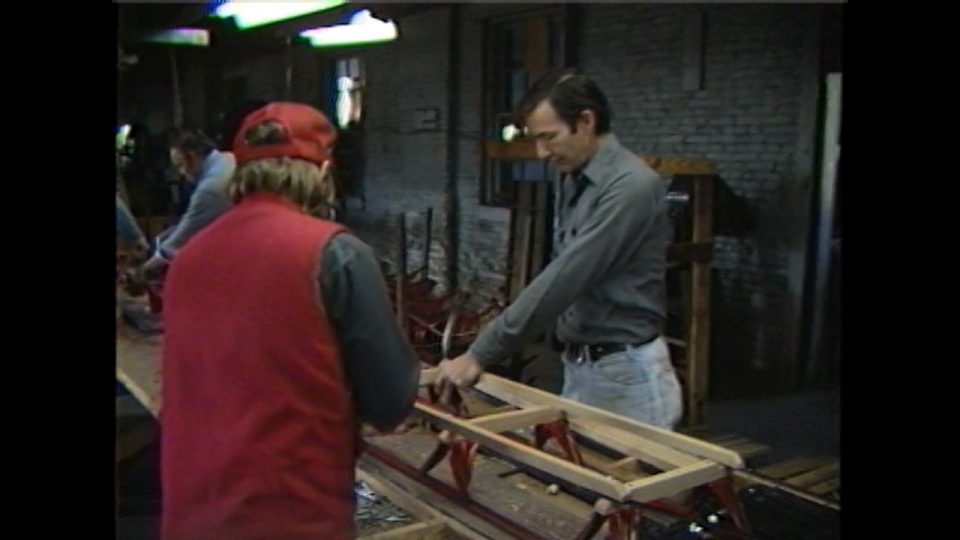DUNCANNON, Pa. (WHTM) — That’s Lightning Guider, not glider as a lot of people called these sleds.
With the news that the Sled Works in Duncannon was up for sale, it seemed like a good time to delve into our vault and pull some 38 year old video out of mothballs.
On December 17, 1984, reporter Bill Martin and I got to visit the Standard Novelty Works factory to shoot a story about the Lightning Guider’s 80th Anniversary.
We were really fortunate to be able to shoot this assembly line. Standard Novelty, or the Lightning Group as it had been renamed, built winter toys like sleds in the summer, and summer toys in the winter. They just happened to have a special order of sleds to fill, so we actually had sleds to shoot. We really lucked out.
Get daily news, weather, breaking news and alerts straight to your inbox! Sign up for the abc27 newsletters here!
So without further ado, here’s a transcript of the story:
“I think one of our finest childhood memories has got to be gathering a group of friends and heading to the biggest hill in town, pulling along our Lightning Guiders sleds. Well, the Lightning Guider sled is made right here, in Duncannon, Pennsylvania.”
The Lightening Sled Group began selling their product at the turn of the century, just after the patent for the steering mechanism on the sled became public property. Norm Rosen is owner and president of the Lightning Group.
“There are only three sled companies left in the United States, and we ship our sleds all over the country. We ship to Georgia, California, Maine, and all points in between.”
“The Lightning sled is eighty years old this year, and aside from the addition of a few machines, they’re made the same way they were back in 1935.”
Before that year all the work was painstakingly done by hand.
“How are they made, explain the process?” “Well, we start with rough lumber, and we cut the lumber to size, the width, the length, we sand it, we shape it, we cut the runners, we paint them, we rivet them, we assemble the whole sled. The final step in the process is dipping the entire sled into a protective varnish to cover the entire sled, and keeps the bad weather away from it.”
Ironically, production is at its height during the summer months. Nearly 100 people turn out 1000 sleds a day. At this time of year there is barely enough work to keep a dozen people busy. Bill Martin, Channel 27 News, Duncannon.
As you can see from the story, building a wooden sled with metal runners required a lot of hands-on work. We were told efforts to automate sled making had been totally unsuccessful. Robots smart enough to make allowances for the expansion, contraction, warping, and flexing of pieces of wood didn’t exist yet.
Such robots might exist now, but too late for Lightning Guider, and other sled makers in America. The last Lightning Guider rolled-or perhaps we should say slid-off the assembly line in 1988, and the factory closed as a factory in 1990. It would reopen a few years later as The Sled Works.
I might be the only person to ever shoot video of the Lightning Guider assembly line. If someone else has, I’d really like to see the footage.
There are still wooden sleds of the Lightning Guider/Flexible Flyer “runner sled” design to be had, but they’re pricey-from $65 to over $200. The sled market is now dominated by plastic sleds that can be molded in one piece, and cost a lot less than their hand-made wood and steel counterparts.


